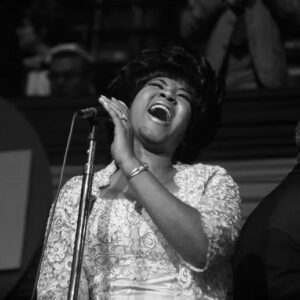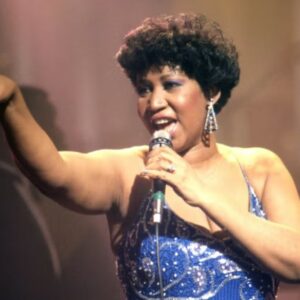Cillian Murphy, an actor whose career has spanned over two decades, is a rare talent in the world of film and television. With a striking look that blends vulnerability and intensity, and an ability to infuse his characters with a subtle, almost haunting emotional depth, Murphy has become one of the most distinctive actors of his generation. From his early days in indie films to his iconic role as Thomas Shelby in Peaky Blinders and his collaborations with director Christopher Nolan, Murphy has shaped a remarkable career. This article explores how his acting style has evolved over the years, tracing his journey from a rising star in Hollywood to one of the most compelling and enigmatic performers in contemporary cinema.
1. Early Career: The Subtle Intensity
Cillian Murphy’s early career was characterized by a quiet but undeniable presence on screen. Unlike many actors who burst onto the scene with larger-than-life performances, Murphy’s early roles were often marked by a restrained and introspective energy. His breakthrough came with Danny Boyle’s 2002 film 28 Days Later, where he played Jim, a man who wakes up from a coma to find the world decimated by a viral outbreak. Murphy’s portrayal of Jim is a masterclass in minimalist acting, relying heavily on his expressive eyes and body language rather than lengthy monologues or dramatic outbursts. The film’s horror and post-apocalyptic themes could easily have drowned out any subtle performances, but Murphy’s stillness and silence spoke volumes.
The quiet intensity that Murphy brought to this role became a signature feature of his early career. In films such as The Wind That Shakes the Barley (2006), Ken Loach’s drama about the Irish War of Independence, Murphy once again displayed an ability to convey powerful emotion without overt theatrics. His character, Damien, is deeply conflicted, torn between his duty to his comrades and his desire for a more peaceful life. Murphy’s performance in this role, like many others in his early career, speaks through small but significant moments. A glance, a clenched fist, or a slight shift in posture — these physical nuances revealed his character’s inner turmoil with a quiet but devastating power.
2. Collaborating with Christopher Nolan: A Shift Toward Complex Characters
Murphy’s career began to gain international attention thanks to his collaborations with filmmaker Christopher Nolan. These collaborations would prove to be pivotal in shaping Murphy’s evolving acting style. It was in Batman Begins (2005) that Murphy first worked with Nolan, playing the role of Dr. Jonathan Crane, a psychiatrist who transforms into the villainous Scarecrow. In Nolan’s Batman trilogy, Murphy’s portrayal of Scarecrow was more than just a menacing figure. Rather, it introduced a level of complexity and nuance that would become characteristic of his later roles.
Scarecrow is an intriguing villain, one whose external menace is matched by an unsettling psychological depth. Murphy imbued Crane with a quiet, almost intellectual form of evil. The character is not a typical loud, bombastic villain but someone who can quietly manipulate and subdue his enemies, often through psychological means rather than physical violence. This type of character required Murphy to channel both vulnerability and menace in equal measure — an acting balance that became a hallmark of his style in Nolan’s films. Murphy’s ability to convey inner conflict, while maintaining a sense of unpredictable danger, made his portrayal of Scarecrow one of the most memorable aspects of the Dark Knight trilogy.
In The Dark Knight (2008), Murphy’s role was expanded, although his screen time was limited. In the few scenes he appears, Murphy’s Scarecrow continues to embody the tension between fear and reason, and the subtlety of his performance in these brief moments only serves to highlight his ability to communicate more with less. Nolan’s films are populated by characters who are defined by moral ambiguity, and Murphy’s portrayal of Scarecrow was a perfect fit for this sensibility. His ability to give his character both a chilling calmness and a moment of wild unpredictability marked a shift in Murphy’s acting technique — from being an actor who could convey emotions with silence to one who could depict complex psychological landscapes with precision and control.
3. Peaky Blinders: Mastering the Art of Silence
The role that truly catapulted Murphy into the realm of iconic television performances was Thomas Shelby in Peaky Blinders, a gritty period drama about a Birmingham-based gang in the aftermath of World War I. The role demanded a level of emotional control and internal complexity that Murphy had already begun to develop, but in Peaky Blinders, he would be forced to push these boundaries to their limits.
Thomas Shelby is a character defined by contradiction. He is a ruthless gangster, a man who orchestrates violent schemes with a level of cold calculation, but he is also a man haunted by the trauma of war, a brother, a lover, and a leader who carries the weight of his family and his empire on his shoulders. Murphy’s portrayal of Shelby is an exploration of silence as a form of communication. Where other actors might turn to dialogue to express the emotional turmoil of their character, Murphy uses silence, stillness, and a carefully controlled gaze to suggest an inner world of complexity and suffering. In Peaky Blinders, words often come second to Murphy’s physicality. A look exchanged between Shelby and his brother Arthur (Paul Anderson) speaks volumes more than any lengthy dialogue could.
This is one of the defining aspects of Murphy’s acting: his ability to communicate power, vulnerability, and emotional depth without relying on verbal exposition. In a show that often revolves around violent confrontations and high-stakes drama, Murphy’s restrained performance provides a quiet but overwhelming force that anchors the series. The subtlety with which he portrays Thomas Shelby’s psychological struggles, his PTSD, and his ambitions, transforms him into one of the most compelling antiheroes on television.
The calm before the storm is a recurring theme in Murphy’s work, and nowhere is this more apparent than in Peaky Blinders. His Shelby often seems to be holding back, as if every moment of intense violence or confrontation is a release of tension that has been building for a long time. In this way, his performance reflects not just the character’s internal conflict but the larger tensions in post-war Britain, where violence and class struggle collide. Murphy’s mastery of silence, and his ability to convey so much through just a subtle shift in his posture or a momentary look, elevated Peaky Blinders beyond a simple gangster drama and turned it into a deep exploration of a broken man trying to maintain control over the forces threatening to consume him.
4. The Development of Vulnerability and Emotional Depth
As Murphy’s career progressed, his willingness to explore vulnerability in his characters became one of his most significant artistic choices. While his early work emphasized controlled intensity and minimalism, Murphy gradually became more comfortable portraying raw, emotional vulnerability.
One of the key roles where this vulnerability shines through is in Christopher Nolan’s Dunkirk (2017). As a soldier named Alex, Murphy plays a man struggling with the trauma of war and a deep fear of death. In a film that relies heavily on visual storytelling and practical effects, Murphy’s performance is a study in internal conflict. His portrayal of fear, anxiety, and desperation without words, only through his expressions and body language, is both haunting and compelling. The minimalistic nature of his role — there is little dialogue and even less exposition — forces Murphy to communicate his character’s emotional state entirely through his physical presence. It’s a testament to his skill as an actor that he can elicit such strong emotional reactions from the audience without saying a single word.
Another important film in Murphy’s exploration of vulnerability is A Quiet Place Part II (2021). Though Murphy’s character, Emmett, is more of a secondary role, the emotional weight of his performance still leaves a lasting impact. Emmett is a grieving father, struggling with the loss of his family in a post-apocalyptic world. His portrayal of a man hardened by loss and struggling to find hope again is a moving example of Murphy’s ability to convey emotional complexity without resorting to melodrama. Through Murphy’s nuanced performance, the audience can feel the layers of grief, guilt, and the desire for redemption.
5. Conclusion: The Ongoing Evolution
Cillian Murphy’s journey as an actor is a remarkable one, marked by a continual evolution in his craft. From his early days of subtle intensity to his more recent roles that explore the depths of vulnerability, Murphy’s ability to adapt to diverse characters while maintaining a distinct, almost enigmatic quality has set him apart in the industry.
As he continues to work with visionary directors and tackle increasingly complex and challenging roles, Murphy’s acting style will no doubt continue to evolve. His ability to communicate volumes without saying a word, his control over silence, and his exploration of inner emotional landscapes remain the cornerstones of his technique. Cillian Murphy’s career is not just a collection of diverse roles; it is a testament to the power of nuance, restraint, and emotional depth in performance. As he continues to push boundaries and explore new facets of human experience, his ongoing evolution as an actor is something that cinema lovers and fans alike will continue to watch with bated breath.





